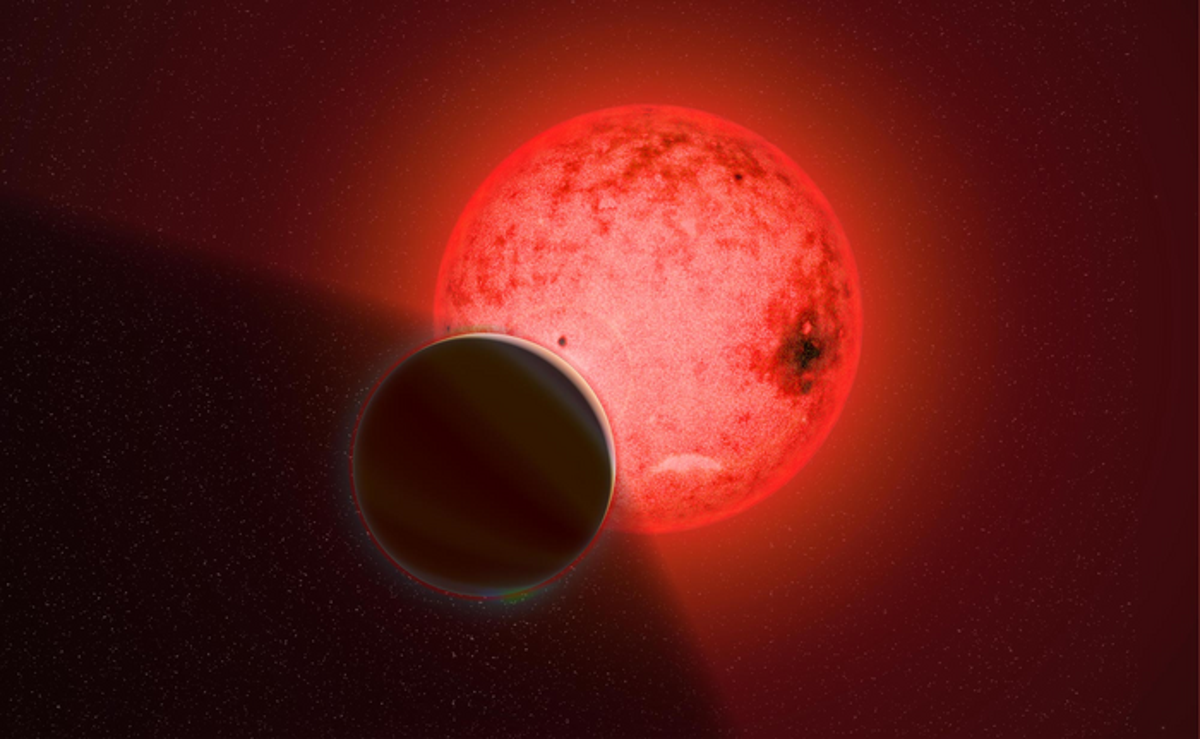‘Forbidden’ world could change our understanding of how planets form

Scientists have found a planetary system with a “forbidden” world, which could rewrite the story of how such planets form.
The planet has a large, gas giant planet, similar to our Jupiter. But its star is a red dwarf, just four times the size of Jupiter itself.
Scientists previously thought that it was unlikely that such a small star would be able to host such a large, gassy planet.
“The host star, TOI-5205, is just about four times the size of Jupiter, yet it has somehow managed to form a Jupiter-sized planet, which is quite surprising!” said Shubham Kanodia, from the Carnegie Institution for Science, who led the research.
Gas giants have previously been formed around M dwarf stars of this kind before. But the newly discovered star is younger, and has a lower mass.
Scientists have named the planet TOI 5205b, after the star around which it orbits.
“TOI-5205b’s existence stretches what we know about the disks in which these planets are born,” said Kanodia.
“In the beginning, if there isn’t enough rocky material in the disk to form the initial core, then one cannot form a gas giant planet. And at the end, if the disk evaporates away before the massive core is formed, then one cannot form a gas giant planet. And yet TOI-5205b formed despite these guardrails.
“Based on our nominal current understanding of planet formation, TOI-5205b should not exist; it is a “forbidden” planet.”
TOI 5205b was first spotted as a potential planet by Nasa’s Transiting Exoplanet Survey Satellite or TESS, which looks for the signature dip in light that happens as planets cross their stars, known as a “transit”. TOI 5205b’s was notable because of the relative similarity in size between the planet and its star, which meant that it blocks out about seven per cent of the light, and is one of the largest known transits.
Scientists then examined it with more telescopes, and confirmed that it was a planet and that it appeared to be of a size that was thought impossible.
Now researchers hope to conduct yet more research on the world using Nasa’s James Webb Space Telescope which recently launched. The very large transit means that those observations should be particularly fruitful – and help shed light on its composotion, as well as the unusual story of its birth.
